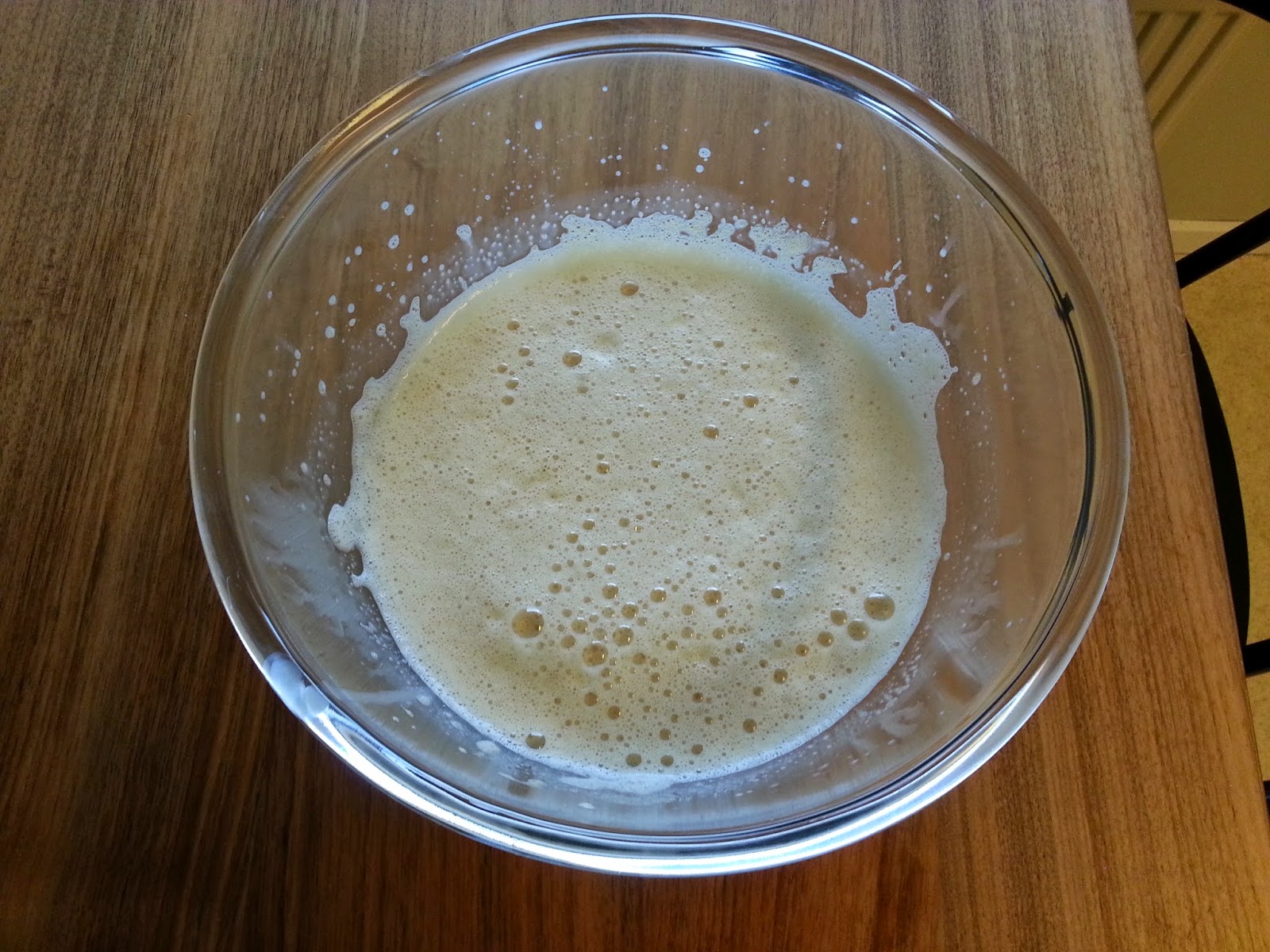It was my turn to bring cookies to work this Friday, and I decided to make salted caramel filled macarons.
In my search for a recipe for the filling, I came across a new recipe for the macarons themselves. I learned that the recipes that I've been using up to now were the "french version", but that there is another option, the "italian version". The difference is in how the meringue is done.
I decided to try the "italian version", and I don't think I'll be going back.
This adds a tiny amount of complexity to making the batter, but it also makes it much more stable and consistent.
I found the recipe from another blog, which linked to another blog, which had the recipe but also referred to the book it came from... No offense to other bloggers, but I'll just say that this recipe is from the book "Bouchon Bakery". If you like the recipe, buy it. It looks to have a lot of good recipes, and I'll probably be making something else from it before long.
You can leave out the instant espresso if you like, it's just a very subtle flavor and gives a slight tinge to the macarons.
 |
| Salted caramel macarons |
Ingredients - Macarons
212g Almond meal
212g Powdered sugar
82g + 90g Egg whites
236g + a pinch Granulated sugar
158g Water
0,5 tsp Instant Espresso (optional)
Ingredients - Salted Caramel
2,35 dl Whipping cream
3,55 dl Granulated sugar
2 tsp Salt (preferably coarse)
220g Butter
First, to make the macarons.
Preheat the oven to 180°C.
Sift the almond meal and powdered sugar into a large bowl and whisk together. Make a well in the center, but leave a bit of almond sugar at the bottom. Pour in the 82g of egg whites, and optionally, the instant espresso. Mix together using a flexible spatula, you should get a fairly thick mixture.
Now comes the bit that makes this "italian", and italian meringue. Put the 90g of egg whites into a bowl, and get your electric whisk ready. Put the granulated sugar and water into a pot, and place on the stove over a medium-high heat. You want to bring the sugar to 120°C at the same time as the meringue reaches soft peaks... The sugar takes some time to reach this temperature, so you don't need to start the meringue until the sugar reaches 100-110°C. At that time, add a pinch of sugar, and whisk at medium speed until it reaches soft peeks. As soon as the sugar reaches 120°C, take it off the heat, and slowly trickle into the meringue while whisking. Continue to whisk at medum-high speed for a few minutes, until it's firm and glossy, and the meringue has cooled (the bowl might still be warm, that's fine).
Fold 1/3 of the italian meringue into the almond mix, then continue folding the meringue in, a little bit at a time.
You probably won't need quite all of it, but most of it. You are looking for a texture, where it is still somewhat firm, but but not too firm. It should still form ribbons, but sort of "relax" into itself. The best way to think of it is probably this, we are about to pipe this onto a tray, as we do we'll get a peak, the mixture should be soft enough that the peak collapses into the batter so that we get a smooth top, but also firm enough that it doesn't go completely flat.
Pipe the batter, using a circular hole tip, onto a baking tray covered with grease proof paper. You are looking for about 4cm in diameter (they'll grow a little as they settle down, so keep that in mid as you pipe the next one).
Place in the middle of the oven, immediately turn it down to 160°C, and bake for 9-12 minutes.
As you take them out, do so gently, a bang will make them collapse a bit (not a disaster, but still).
Let them rest on the tray for about 5 minutes, then transfer to a rack for cooling.
Heat the oven up to 180°C again, and repeat until all the batter is baked.
Now for the salted caramel.
Cut up the butter into small pieces, and leave in room temperature.
Place the cream and salt into a small pot. Place the sugar into a wide pot (the thinner the layer of sugar, the easier it'll be).
Bring the cream to the boil, and take of the heat. In the meantime, melt the sugar over a medium-high heat. As the sugar melts and starts getting dark, it might be a good idea to warm up the cream again, it really needs to be warm when it's combined with the caramel, or it won't work.
Once the sugar has become a dark brown caramel (around 175-180°C), take it off the heat and, while whisking, slowly pour in the warm cream.
Be careful! It'll bubble and spit, and you do not want this stuff on you.
Once it has cooled to a reasonable temperature (50-60°C), stir in the butter, a little at a time. Place in a shallow container and let cool in the fridge.
To finish up.
Place the salted caramel into a bowl, and whisk (by hand, it's important not to over whisk it, as it'll separate). It should become softer making it easy to pipe.
Match cookies that are the same size, pipe some caramel onto one of them, sprinkle with a
small amount of coarse salt, then place the other one on top and twist until the filling fits nicely along the edges.




































